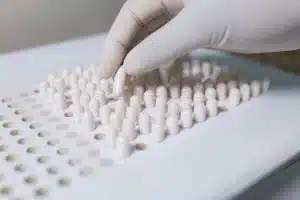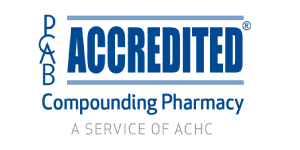What is Acne?
Acne is a common skin condition that occurs when the hair follicles under the skin are blocked due to oil, dirt, or dead skin. Acne most often appears on the face, but it may also appear on the back, chest, and shoulders. For most people, acne disappears by the age of 30, but some people in their 40s and 50s still have these acne-related problems.
What are the Causes of Acne?
Acne occurs when small holes in the skin called hair follicles are blocked. Glands are attached to hair follicles, which are small holes in the skin that make up individual hairs. The sebaceous glands lubricate the hair and skin, so they don’t dry out. In acne, the glands begin to produce too much sebum.
Excess sebum mixes with dead skin cells, both of which can form blockages in hair follicles. If the blocked hair follicle is close to the surface of the skin, it will bulge out and form a white patch. In addition, clog or pores in the opening of hair follicles causes blackheads. Normally, harmless bacteria living on the skin can contaminate and infect blocked hair follicles, causing papules, pustules, nodules, or cysts.
Hormonal changes due to androgens, diet & consumption of certain medication can also cause acne.
What are the Different Types of Acne?
1. Papules:
Papules are small red bumps that form when oil or excess skin cells clog the pores and mix with bacteria called Cutibacterium acnes or Propionibacterium acnes (previously known as Propionibacterium acnes) on the skin. Bacteria invade surrounding skin tissues and cause inflammation. Papules do not contain pus.
2. Pustules:
Pustules are small, raised bumps with white in the middle and red, inflamed skin around them. They usually appear in groups on the chest, face, or back. Pustules form when clogged pores are infected, but hormonal change can also cause pustules. They are like papules, except that the pustules contain a yellow liquid called pus. Cracked pustules can spread bacteria, so don’t try to squeeze, or squeeze them. Only a doctor can safely remove pustules.
3. Nodules:
Nodular papules are red or flesh-colored bumps located deep on the surface of the skin. Nodular acne is usually caused by Propionibacterium acnes, which can cause painful infections deep in the pores.
4. Cysts:
Cystic acne is the maximum intense shape of acne and is likewise the result of contamination deep inside the skin. Acne cysts are large, red, inflamed, painful, and pus crammed. Cysts are softer than nodules due to the fact they may be pus-crammed and regularly burst, infecting the encircling skin.
Why Do You Need Dermatology Compounding for Acne?
In dermatology practice, one can see many acne patients of different ages, races, sex, skin type, and textures. Everyone has different acne-like conditions with varying degrees of severity and stages. Therefore, in addition to the type of acne, dermatologists also need to evaluate the patient’s entire medical history to determine the best course of action for the treatment of acne which would be unique to the individual patient’s needs.
Commercially available medication for acne treatment is not made for individual patient’s unique needs and dermatologists cannot change the dosage or ingredients used in these commercially available medications. Many patients would not respond well to these commercially available acne medications, as they have different skin types and conditions.
Compounding medication can solve this problem. Dermatologists can significantly enhance patient adherence and satisfaction as well as treatment outcome with dermatological compounding medications.
Benefits of Using Dermatological Compounding Medication for Acne Treatment:
- The compounding medication allows the dermatologist to give personalized care for acne patients. They can choose the most suitable foundation or create a customized combination foundation for the patient’s skin.
- In addition, the base for acne is specially formulated to increase the effectiveness of the active pharmaceutical ingredients. The compounding pharmacist at VIOS will work with your doctor to tailor individual prescriptions for you and your skin’s specific needs.
- Dermatologists work with the compounding pharmacist to convert a variety of oral medications into an easy-to-take dosage form.
- Compounding medication can help dermatologists to make sure that the patient’s medicine does not contain gluten, sugar, lactose, colors, or preservatives.
- Proven effective novel ingredients can be added to the medication to improve the healing process like niacinamide.
- The dermatological compounding medication allows the dermatologist to increase or decrease the dosage of the acne medication during any phase of the treatment. This improves the efficacy and eliminates any potential side effects.
- Affordability of the compounded medication is less as the patient pays for one custom prepared acne medication rather than two or more commercially available medications.





Hello there, I found your blog via Google even as searching for a comparable subject, your site came up, it appears
to be like good. I have bookmarked it in my google bookmarks.
Hello there, simply was aware of your blog via Google, and
found that it is really informative. I am going to
be careful for brussels. I will be grateful when you continue this in future.
Lots of people will probably be benefited out of your writing.
Cheers!